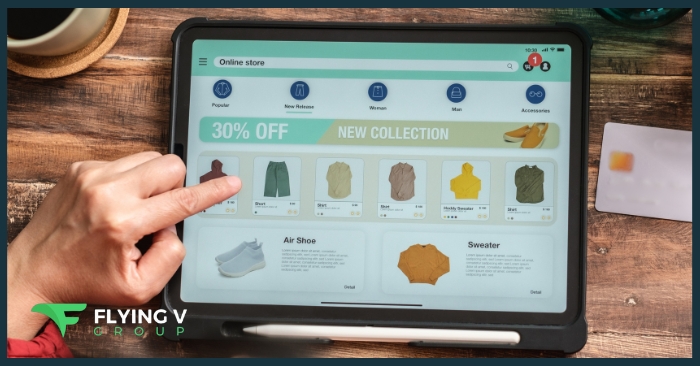You know that moment when you’re mindlessly scrolling, and suddenly an image stops you cold? No words needed – it just hits, making you immediately feel something. That’s not a coincidence – that’s visual storytelling doing its thing.
In 2025, we’re way past the point of debating whether visuals matter in marketing. They do, and that’s a given. But it’s not just about slapping a photo next to your ad copy. It’s about telling a story – one your audience can see, feel, and connect with in seconds. Creating relatable content is one of the biggest trends in online marketing right now, and it’s probably here to stay for a long time.
Here’s the deal: today’s digital world is noisy. People scroll, look through, and move on faster than ever. If your brand doesn’t catch their eye or their heart, you’re toast. Visual storytelling breaks through that noise, creating an impact like no other type of marketing. It turns casual scrollers into engaged viewers, and engaged viewers into buyers. It also helps build a loyal following of people who are genuinely interested in your brand and its story. And that’s something all companies are striving for these days.
So, why does it work, and what’s the strategy behind it? Let’s dive deeper into the topic.
- We’re Built for Stories and Images
- Why Visuals Crush Engagement (and Conversions)
- Crafting a Story Through Images
- Where to Find Visuals That Actually Work
- Real-World Visual Storytelling Examples
- Visual Storytelling and Emotional Branding: Why They Just Work Together
- Emotions Are What Drive the Clicks
- Conclusion
We’re Built for Stories and Images
The truth is, we’re hardwired for stories and tend to remember visuals more than words. It’s been that way since humans sat around fires painting on cave walls. Our brains also love images more than text. They process visuals ridiculously fast – like, 60,000 times faster than text. It’s no wonder a photo can say more than a paragraph ever could.
Think about it: you probably can’t recite yesterday’s email subject lines, but you can definitely recall the last jaw-dropping Instagram post you shared.

Where Traditional Marketing Misses the Mark
Here’s where a lot of campaigns go wrong – they talk too much. They describe too many features using way too many words. There’s not enough feeling in all of that. And when you’re up against cat memes and vacation selfies, “Our platform saves you time” just doesn’t cut it.
Instead of saying “our product is simple,” show it being used in a real-life situation. Create a sleek animation or a clean before-and-after image. That’s how you move from “explaining” to actually connecting to your audience. Diversify your visuals by using stock websites like Depositphotos, and don’t be scared to try different approaches to find what actually works for your brand or company.
Why Visuals Crush Engagement (and Conversions)
There’s one thing about visuals you need to remember – they make people stop and look. Let’s talk numbers – because data doesn’t lie.
- Tweets with images get 150% more retweets.
- Facebook posts with visuals receive 2.3x more engagement.
- Content with visuals gets 650% more interaction than text-only content.
Images aren’t just pretty – they’re performance drivers. In the end of the day, people will remember a creative image even if it was an ad selling something rather than a bunch of dull text they’ve read.
People Remember What They See
Words are easy to forget, but visuals? Those linger. A bold product shot, a customer’s smiling face, or a branded illustration – those moments stick around long after someone closes the tab. When you consistently use the same style, tone, and vibe in your visuals, people start to recognize you before they even see your logo. This is how you combine storytelling with your own brand design and styling.
Crafting a Story Through Images
While each brand should find its own approach and styling, there are key elements that will make your visual storytelling pop. Let’s look at some of them.
Step 1: Start With the Feeling
Marketing isn’t about pushing products – it’s about sparking emotion. First and foremost, ask yourself:
- What do we want our audience to feel?
- What moment in their journey are we showing?
- How does our product change their story?
Whether it’s relief, inspiration, or excitement, lean into that emotion and build the visual around it. You should always think about your audience, but never forget about your own story, too. This way, you won’t get lost in the storytelling and will be able to build a coherent strategy that actually brings results.
Step 2: Follow a Narrative Arc (Yes, Even in One Image)
Even a static photo can tell a story if it’s framed right.
Try this simple 3-step arc:
- Setup: The “before” moment – problem, pain point, or unmet need.
- Shift: Enter the product, experience, or idea.
- Resolution: The satisfying outcome or transformation.
You can use a variety of formats to reach your goal. This can be done in:
- Infographics.
- Carousel posts.
- Hero banners.
- Short videos.
- Even meme-style visuals, if they fit your brand.
Step 3: Keep It Cohesive
Your visuals shouldn’t feel like they’re from five different brands. Pick a lane and follow it diligently. Consistent colors, fonts, illustration styles, and photography tone create a visual language that will be easy to remember. It’s like your brand’s accent – once people get familiar with it, they recognize it anywhere.
Where to Find Visuals That Actually Work
It’s best to skip stiff stock photos and look for something more genuine. Let’s be honest – most free stock photos scream “fake.” You know the ones. A guy in a suit giving a thumbs up in front of a whiteboard? That’s never going to work. Look for professional platforms with a lot of diversity and different photo options for all your needs.
A good stock image platform should have:
- Diverse imagery that reflects real people and modern lifestyles.
- Smart search filters to find on-brand visuals fast.
- Video clips and vector graphics for dynamic content.
- High-resolution downloads that don’t look pixelated on mobile.
With the advancement of AI, you can also tap into that powerhouse to create visuals tailored for your specific needs. Just be careful because most people have an uncanny way to tell whether the image is real or AI-generated! However, it’s a great field for experimenting if stock websites aren’t enough.

Real-World Visual Storytelling Examples
Apple – Let the Product Speak
Apple doesn’t need flashy slogans. One photo of a sleek iPhone, shot in perfect lighting, says it all. It’s clean, aspirational, and emotional – all at once.
Airbnb – Homes That Feel Like Yours
Airbnb uses real photos of real homes (often taken by users) to paint a picture. You’re not just booking a room – you’re imagining yourself sipping coffee on that balcony.
Spotify Wrapped – Visual Data, Personal Story
Spotify turned user data into a year-end tradition. Bold colors, quirky layouts, and bite-sized stats create a narrative that’s not only personal but also shareable. That’s visual storytelling at its finest.
Visual Storytelling and Emotional Branding: Why They Just Work Together
Here’s something not-so-surprising: most people don’t buy stuff because it makes sense – they buy it because it feels right. It’s emotion first, logic second. Sometimes, even third.
That’s exactly where visual storytelling does its best work. It doesn’t just show your product – it creates a mood, a vibe, a feeling. It connects the dots between what you sell and how people want to feel.
Think about it. You’re not just selling a new pair of sneakers. You’re selling that rush of freedom during a 6 a.m. trail run. Same goes for skincare. It’s not about the ingredients (though those do matter). It’s about the confidence that comes from waking up, looking in the mirror, and thinking, “Okay, I’ve got this.”
Emotions Are What Drive the Clicks
Take a second and remember the last thing you impulse-bought after seeing an ad. Did it make you laugh? Did it tug at your heart a little? That’s not a fluke. Research backs this up: emotion has way more influence over purchasing decisions than cold, hard facts.
Here’s how visuals work that magic:
- Colors make us feel things – warm tones invite trust, while cool tones feel clean and calming.
- Faces are powerful. A real, genuine smile can do more than a 20-word headline.
- Scenarios we relate to help us imagine our lives improved – thanks to your product, of course.
In short, images fast-track emotional connection. That very connection is what turns viewers into buyers.
Let Your Customers Tell the Story (Seriously)
Now, here’s a twist: sometimes the best storyteller isn’t your brand – it’s your customer. User-generated content (UGC) has become a favorite for marketers, and for a good reason. It’s raw, real, and refreshingly unscripted. You’re not hiring models. You’re showcasing real people, real stories, and real results.
Why UGC works so well:
- It builds trust – we believe other people more than we believe ads.
- It boosts reach – every time someone posts about your product, your audience grows.
- It makes your brand feel human – because people want to buy from people, not faceless companies.
Conclusion
In a fast-scrolling, content-saturated world, great visuals aren’t optional – they’re mission-critical. Whether you’re running ads, building a brand, or launching a product, visual storytelling is how you cut through the clutter and actually connect.
It’s not about being artsy – it’s about being clear, emotional, and memorable. A good visual story doesn’t just explain your product – it sells the experience, the transformation, the feeling your audience is chasing.
It’s always important to follow a narrative that’s easy to relate to. People like to recognize themselves in good storytelling, especially when they overcome something, and life becomes so much better. Don’t just spoon-feed them the story – add the necessary images that will help them feel it, relate to it on a deeper level.
Words are important, but statistically, images have much more impact. They help create that emotion that will stay with your audience forever. Because at the end of the day, your audience might not remember every word you wrote, but they will remember how your brand made them feel. In marketing, that translates to your brand’s success and instant recognition.






0 Comments